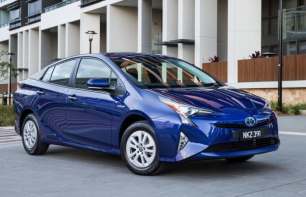If you’ve never driven an electric car before, there is a bit of a learning curve. For starters, the torque is available instantaneously, and there isn’t any exhaust or engine noise to contend with.
But don’t worry, because Nissan has made it really easy to just get into the Leaf e+ and go.
Firstly, there is nothing intimidating about the cabin. The layout for all the controls and switches is well thought out, and everything is just where it should be and does what it's meant to do.
This means that, despite having an electric drivetrain, the Leaf e+ feels familiar – and that’s important to some.
Turn the car on, put it in Drive and – just like a regular car – push on the throttle to move. But even though torque is available right away, the Leaf e+ never shoots forward at a mind-blending or uncontrollable pace.
Can you tell the Leaf e+ has a peppier engine than the base offering? It’s hard to say without driving the Leaf and Leaf e+ back-to-back, but Nissan’s new electric hatchback offers spritely enough performance.
What is noticeable is the boost to driving range.
While an extra 110 or so kilometres might not seem like that much in the grand scheme of things, it means you don’t have to worry about plugging in and recharging as often, and it's always nice to look down at the range-remaining display and see a three-digit figure.
In our week with the car, we only charged up once, and there was never a moment where we stressed about running out of juice before getting the car back to base.
And if you really are worried about your range, or are into hypermiling, there is always the Eco mode, or Nissan’s e-Pedal, to play around with.
The former will just dial back performance to add about 15km to the overall range, while the latter allows the Leaf e+ to be operated with just the throttle pedal.
Lift off the right foot, and the Leaf e+’s aggressive regenerative braking will kick in to recoup energy and slow down the car, forcing you to think about and be careful with your inputs.
It might sound like a marketing gimmick, but it really is the best way to drive the Leaf e+ if range is a concern.
The Nissan Leaf e+ isn’t the last word on dynamics by any stretch, turn the wheel and the car will travel where you direct it, but it does so without any great flair or panache.
No, the 2021 Nissan Leaf e+ is a not dynamic wunderkind, but it absolutely nails being a comfortable, familiar and unintimidating step into the world of electric cars.

